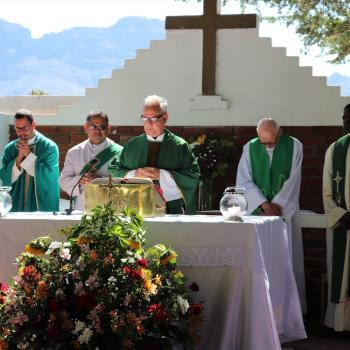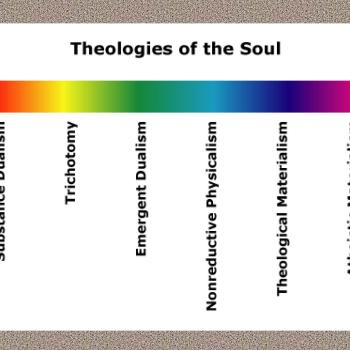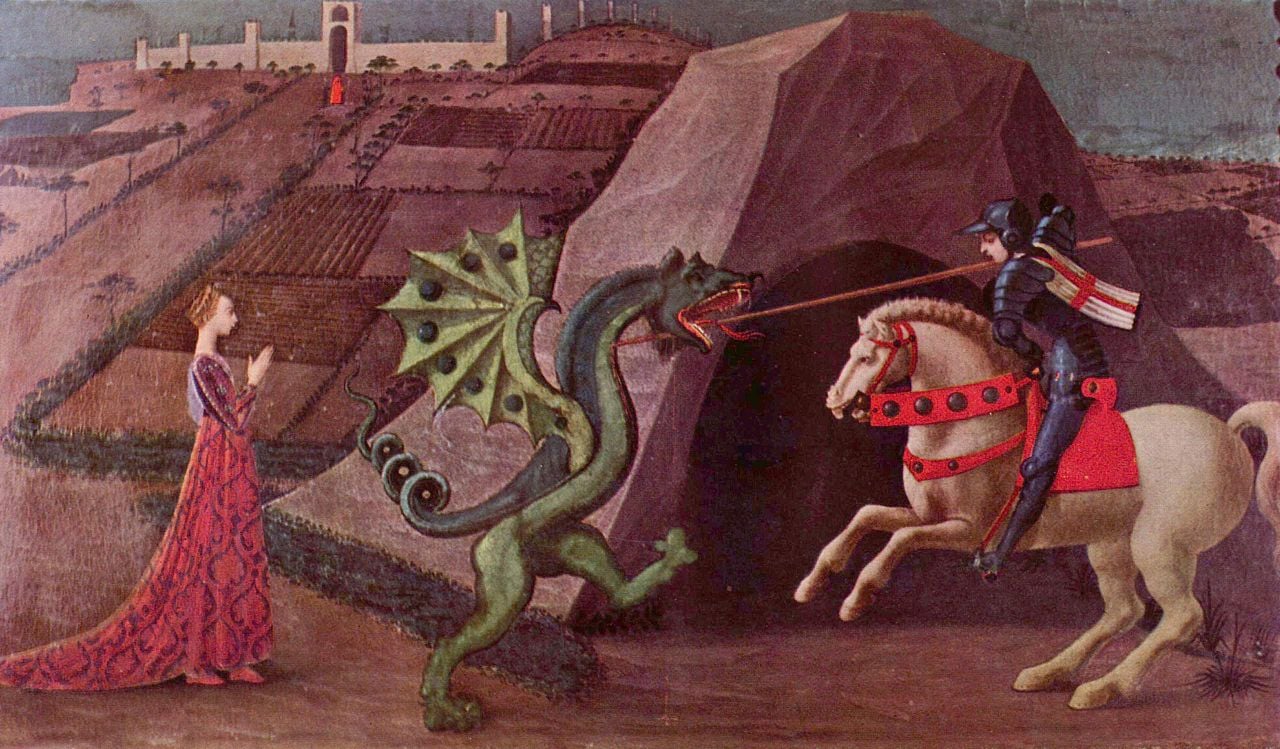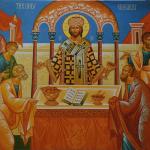
[Editor’s Note: If you appreciated Jennifer Fulwiler’s affection for Tupac Shakur as expressed in her book, Something Other Than God, this is especially for you.]
Kendrick Lamar Duckworth’s second studio hip-hop album, good kid, m.A.A.d city: A Short Film by Kendrick Lamar, is a striking mixture of artfully confessed Christian conversion and all the popular conventions of the genre. Lamar guides his listener through the ghetto of Compton, California, where he grew up surrounded by a culture of gang violence and drug use. Twelve connected songs carry his story forward with interstitial pieces of dialogue that allow other characters to enter the narrative. Beginning by describing the restless posturing and desire that typifies “the music of being young and dumb,” Lamar’s music builds in intensity and desperation until a new character, voiced by author Maya Angelou, enters the story, baptizes the artist and his friends, and leads them through the “sinner’s prayer.” By the end of the album, Lamar has found himself in an integrated humanity revealed in Christ, and that drives him to give himself for others. By examining Lamar’s recent music through the Theology of the Body, especially the common themes of doubt, concupiscence, and original subjectivity, we can show the firm theological grounding of Lamar’s conclusions from his narrative while connecting the Theology of the Body to the full drama of the Christian life.
Structurally, good kid, m.A.A.d city can be understood as a “true story told by Kendrick Lamar,” the artist making the “short film,” about “K-Dot,” his younger self, and the maturation from one to the other. Through deepening introspection, Lamar slowly realizes the futility of his worldly lifestyle and embraces Christianity. The album begins with a group of men reciting a version of the “sinner’s prayer,” then jumps in media res with “Sherane a.k.a. Master Splinter’s Daughter,” a story chronologically in the middle of the narrative arc. The next two songs are the true prelude, showing K-Dot at his youngest and rawest. Then the real story begins, proceeding through several songs that depict K-Dot succumbing to peer pressure, doing drugs, and engaging in gang activity in a constantly escalating whirl of youthful abuses that ends with the death of K-Dot’s friend’s brother. This tragedy spurs the young men to realize the extremity of their situation, opening them up to baptism and K-Dot’s transformation into Kendrick Lamar. At the end of the album, in the triumphant song “Compton,” Lamar celebrates his maturation and turns to admire his city. He has embraced it as home despite its imperfections. At the end of this recording, a piece of dialogue from K-Dot leads into the events of “Sherane,” giving the album a cyclical structure.
It is best to examine good kid, m.A.A.d city through the conclusions and self-understanding Lamar reaches at the end of the album—much of the earlier songs should be understood as set-up for his final perspective, intended to show the world what Lamar is rejecting in his conversion. That said, there are several overarching features of Lamar’s vision of the world and his mission that need to be established before embarking on a deeper reading of the album. The songs “Sing About Me, I’m Dying of Thirst” and “Real” contain the climatic conversion, baptism, and repentance that allow for Lamar’s final rejection of the youthful desire for money, power, and sex. They lace together the early narrative with his embracement of love, family, and God—what makes him “real.”
By the spiritual climax of this ‘short film,’ the music becomes frantic and the singing sounds like panting as the desperation becomes too much to bear: “Dying of thirst, dying of thirst, dying of thirst / How many sins? I’m running out / How many sins? I lost count.” K-dot has finally “run out” of sins to satisfy his yearning for union. His search for himself and for maturity, has turned up nothing. He’s so “tired of running” that he finally begs, “Somebody send me a well for the drought” in the last verse. Not until his soul had become completely fruitless—lost to the point of desiring death—does he turn from himself and begin to ask for help. K-Dot admits that he is “Taking this life for granted” in solid rejection of the Gift of life and creation, and begins to pray for forgiveness: “Lord, forgive me for all my sins for I not know . . .” In the final line of the song he accepts baptism as he “hop[s] in that water, and pray[s] that it works.” As the music fades, an elderly woman’s voice (Angelou) leads the young men through a baptism ritual:
Why are you so angry? You young men are dying of thirst. Do you know what that means? It means you need water—holy water. You need to be baptized with the Spirit of the Lord. Do you want to receive God as your personal savior? Okay, repeat after me: ‘Lord God, I come to you a sinner . . .’ Okay, remember this day as the start of a new life—your real life.
This strong assertion of the necessity of baptism and repentance is the first conclusion Lamar comes to in the album. This baptism clears the “mirror” that he watches himself in. The next passage, at the beginning of “Real,” he says, “Look in the mirror and know I’m there.” The hook then follows. Lamar is at last in fuller possession of himself and able to reinterpret his past life. Now that he has been baptized, he can see what self-love truly consists of.
The only way to escape the restless concupiscence and “thirst” is to truly “love yourself” through the full revelation of “man to himself” in Christ. Solitude is not just a feature of being alone or apart but springs from man’s self-awareness of his own personhood. It both turns man inwards and also allows for his self-gift, thus orienting him towards good that he can know and pursue. This is the same action Lamar takes: in his “new life,” he finds what his personhood truly means in Christ, the “new Adam,” and is then able to reorient himself in his fallen state towards real goods. As John Paul II discusses “Man in Search of His Essence” (ToB 5:4), Lamar tries to illustrate poetically what he believes is “real”: self-love—which makes other love possible, and orientation towards ‘real’ goods—namely family and God. This is the essence of the Christian drama: being reborn in Christ.
Christ’s command to “love your neighbor as yourself” (Mt 20:39) perfectly sums up the circular motion of empathy and subjectivity in good kid, m.A.A.d city. Lamar depicts the inextricable binding of both loves, showing the necessity of loving yourself fully in the true essence of man revealed in Christ. As we see what man truly is, Gaudium et Spes can further guide us. To truly realize man in his essence (which as displayed in the album and the Theology of the Body can only happen through introspection and the new life of baptism) is to realize, “This likeness [to Christ] reveals that man, . . . cannot fully find himself except through a sincere gift of himself” (GS 24). These movements are bound to each other—man’s essence is only found in Christ, but man can only find his essence through the introspection that allows him to realize the nature of the gift of self and to make it fully. Christ is the beginning and end of this circle of self-discovery and self-gift, making the cyclical nature of Kendrick Lamar’s album especially appropriate. We realize that Christ constantly calls our hearts to greater acts of love.
***
Chris McCaffery is a senior at Hillsdale College in Michigan where he studies history and English.

















